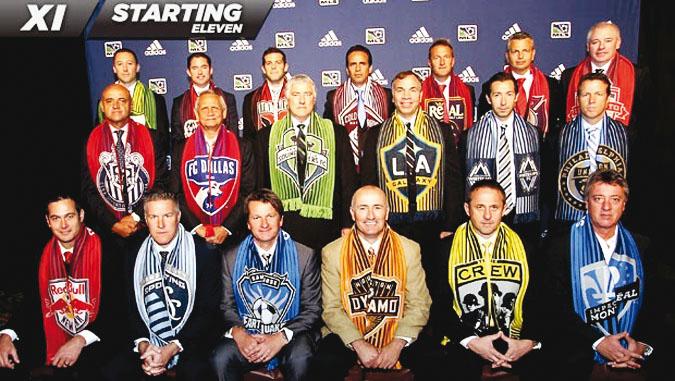MLS Prepares For 18th Season

The original North American Soccer League of Pele, Franz Beckenbauer, the New York Cosmos, Atlanta Chiefs, Rodney Marsh and George Best lasted 17 seasons.
In the years after the league folded in 1984, the NASL was the benchmark set for professional soccer in the United States.
That benchmark continued to exist after Major League Soccer was launched with the 1996 season with 10 teams.
There were lots of questions back then. Would this league last 10 years? When would teams start to disband? Would fans support the league? Would MLS succeed financially?
Well, some of those questions have been answered.
The league did exist after 10 years. Only two franchises have been folded, Miami and Tampa Bay after the 1991 season. Those were desolved by the league. One original franchise, San Jose, eventually moved to Houston in 2006, but was soon replaced by another Earthquakes expansion team.
The league has grown to 19 teams, still has a television contract and is poised to begin its 18th season on March 2. So long to the NASL benchmark!
And how about the attendance. Didn’t the NASL draw huge crowds of 60,000 or more?
Actually, the New York Cosmos did that with its mega-star teams. The Cosmos averaged 47,856 in 1978, but the league never averaged more than 14,440 (1980).
Actually, in the NASL’s second season the league average attendance was only 2,930 in 1969. It was only in the ninth season (1976) that the season league average topped 10,000.
The NASL Seattle Sounders averaged 8,181 in 1983. The Seattle Sounders of Major League Soccer averaged 43,144 in 2012.
In 2012, Major League Soccer’s attendance average was 18,807, third best among major professional sports leagues in the United States behind the National Football League and Major League Baseball. Better than the NBA and NHL.
While the NASL teams bled buckets of blood as they tried to buy enough aging internationals to compete with the Cosmos, Major League Soccer has been slow and steady.
The single enity of the league owning the teams and player contracts, has not been without its problems. Philip Anschutz, Lamar Hunt and the Kraft family invested in multiple franchises to keep the league going in the first decade.
In recent years the Beckham rule, which allows for designated players who’s compensation is not counted against a salary cap, have added marque players like David Beckham and Henry Theirry to the league. However, that compensation hasn’t broken the league.
Because of the league’s structure, you don’t have ego-driven crazy spending to buy a championship team.
The Los Angeles Galaxy will open the 2013 season as the two-time defending MLS Cup champions. Beckham is gone and will play in France, but the core of the team returns.
D.C. United, winners of four league championships and the dominant team in the early years of MLS, returned to the playoffs a year ago. Ben Olsen, who played for D.C. United, has grown as a young professional coach and now leads United.
The common denominator between those early D.C. United teams and today’s Galaxy is current Los Angles coach Bruce Arena. He was D.C. United’s first head coach before moving on to eight years as the U.S. MNT coach.
So here comes season #18 for MLS. The league is 19 teams strong, three of which are based in Canada. New York is the next expansion target. The league has room to grow…..and slow and steady gives MLS time to do just that.
